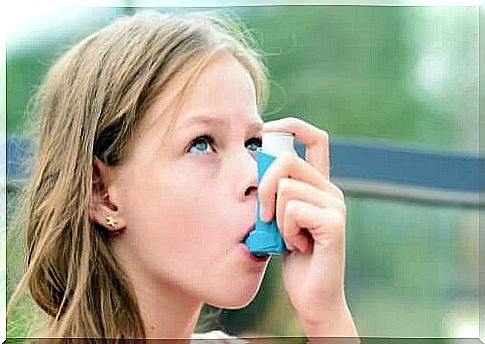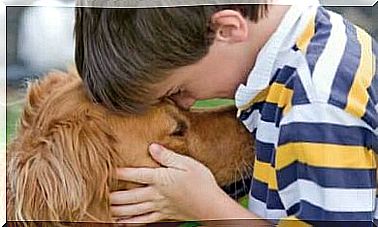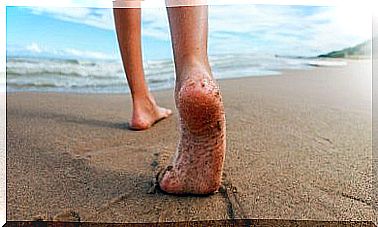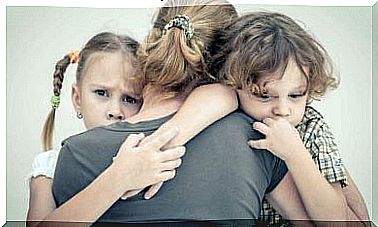The Most Common Respiratory Infections In Children

Respiratory infections are caused by pathogens that invade the body and cause diseases of the airways. The airways are the parts of the respiratory tract through which air passes from the environment to the alveoli. The airways are divided into the upper respiratory tract, i.e. the nasal cavity, pharynx and larynx, and the lower respiratory tract, i.e. the trachea and bronchus. Today we will tell you what are the most common respiratory infections in children and how they are symptomatic.
When is a child particularly susceptible to respiratory infections?
So there are many types of things that contribute to the acquisition of respiratory infections in children. They may be directly related to parental care as well as interactions with family members.
Examples include:
- Inadequate breastfeeding: In other words, if the baby is not breastfed exclusively or is breastfed for only a few months.
- Malnutrition: Poor diet can weaken a child’s resistance and thin out the lung mucosa, allowing microorganisms to enter.
- Cigarette smoke: If family members expose a child to tobacco smoke, this can affect his or her ability to breathe properly.
- Home conditions and overcrowding: When a child sleeps in a room with more than three people, his or her hygiene and safety are at stake.
Symptoms of respiratory infections in children
The most common symptoms of respiratory infections are:
- Cough
- Headache
- Fever
- Irritability
- Snoring
- Ear pain or increased ear discharge
- Nasal congestion due to mucus secretion

Symptoms of upper respiratory tract infections
- Flu or cold: This is a highly contagious ailment that affects a great many children. Symptoms include nasal congestion, sneezing, sore throat, dry cough, and mild fever.
- Influenza: The disease resembles the common flu, but has more complications. The child has fever and chills, tiredness, weakness, and possibly abdominal pain and vomiting.
- Croup: This disease causes inflammation of the trachea, larynx and airways. You can recognize it by hoarse or shallow cough as well as loud breathing.
- Sinusitis: This is a viral inflammation that causes inflammation and mucus buildup. Thus, the result is the accumulation of bacteria in the buccal cavities of the child.
Symptoms of lower respiratory tract infections
- RS virus: This infection affects most children under 2 years of age. Its symptoms are similar to those produced by the common flu. The virus causes breathing difficulties and in severe cases asthma.
- Bronchiolitis: The disease affects children under 2 years of age, especially those aged 3 to 6 months. It causes inflammation in the ducts that take air to the lungs, and therefore breathing is difficult.
- Pneumonia: In this case, the infection attacks the child’s lungs and produces fluids that accumulate in the airways. These prevent proper breathing.
- Asthma: The child’s airways are inflamed, the heart rate is elevated, breathing is difficult and there is not enough air when running or playing.
- GERD: When the muscle that closes the junction of a child’s stomach and esophagus does not work properly, pieces of food and stomach acids enter the stomach from the stomach. This then results in irritation and burns.
- Respiratory Allergies: These are the result of allergens in a child’s environment and cause nasal congestion, eye leakage, tight throat, sneezing and other symptoms.
- Anaphylaxis: This is an allergic reaction to insect bites, latex, medications, or food.
Prevention of respiratory infections
Many public organizations disseminate information to reduce the risk of infection for children and babies. The advice includes in particular:
- Keep your hygiene good if you are in contact with your newborn baby.
- If your baby is underweight, take him or her to a doctor for an examination as soon as possible.
- As for babies, continue breastfeeding for a long time so you can strengthen your baby’s resistance – it would be good to breastfeed for at least six months.

- Ventilate the child’s room well and avoid sudden changes in temperature. Also avoid well-enclosed places.
- Keep your home free from tobacco smoke and also prevent people from smoking near your home.
- Strengthen your child’s resistance by keeping his or her diet good.
- Tell the child that his hands should be washed on both sides whenever he comes home and before meals.
- Avoid sharing your belongings with others, such as toys, food, or cutlery (plates, glasses, or cutlery).
- Make sure he is warm on if it is cold outside.
- If you notice any of these symptoms, such as cough, fever or nasal congestion, or if your breathing is fast, sneezing or snoring, see a doctor straight away.
Respiratory infections cannot always be avoided in children, but at least their risk can be reduced. This type of infection can also be controlled with medication. However, not going to the pediatrician in time can result in serious complications.









